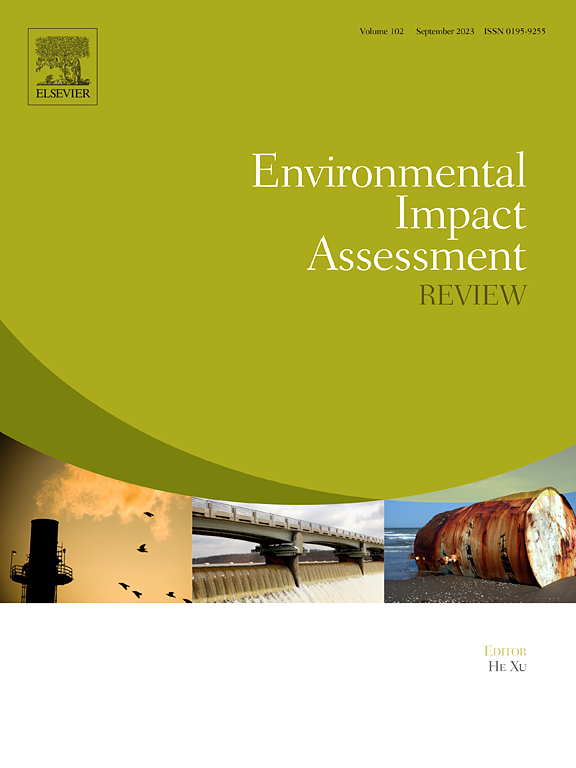Navigating carbon reduction in dense, multi-functional compact cities: Moderators and threshold effects of green space and aging population
IF 9.8
1区 社会学
Q1 ENVIRONMENTAL STUDIES
引用次数: 0
Abstract
Compact-city planning is widely promoted as a pathway to curb urban carbon emissions by compressing land use, shortening travel distances and concentrating infrastructure. Yet its ultimate effectiveness hinges on how ecological and demographic structures interact with built form. Leveraging data for Chinese cities, this study integrates spatial-moderation models with XGBoost-based non-linear simulations to test whether—and how—urban green-space structure and population aging condition the compactness–emissions nexus. Results show that both moderators exert significant and directionally nuanced effects. Expansive green-space coverage and higher patch aggregation amplify the carbon-saving benefits of compactness, whereas excessive landscape connectivity can dampen them, plausibly by increasing fragmentation and mobility demand. Aging likewise matters: a larger share of older residents—especially older men—steadily enhances carbon efficiency, reflecting lower mobility and lifestyle-related energy savings in high-density settings. All moderating effects display pronounced spatial heterogeneity shaped by variations in built-environment intensity, ecological-infrastructure integration and demographic accessibility. Nonlinear analyses reveal clear thresholds for policy guidance: optimal mitigation occurs when green-space coverage reaches 60–65 %, patch connectivity density stabilizes at 15–20 patches km−2, and the aggregation index exceeds 0.12. Demographically, an elderly-population share of 13–20 %—with male shares above 6–8 %—further strengthens emission reductions. Taken together, the findings underscore that effective decarbonization in dense, multi-functional cities requires synchronized planning of green infrastructure and demographic adaptation. By quantifying critical ecological and demographic thresholds, this study provides actionable evidence for precision carbon governance amid rapid urbanization and population aging.
密集、多功能紧凑型城市的碳减排导航:绿地和人口老龄化的调节因子和阈值效应
紧凑型城市规划作为一种通过压缩土地使用、缩短出行距离和集中基础设施来遏制城市碳排放的途径而得到广泛推广。然而,它的最终效果取决于生态和人口结构如何与建筑形式相互作用。利用中国城市的数据,本研究将空间调节模型与基于xgboost的非线性模拟相结合,以检验城市绿色空间结构和人口老龄化是否以及如何调节紧凑性-排放关系。结果表明,这两个调节因子都发挥了显著的、方向性的细微影响。扩大的绿色空间覆盖和更高的斑块聚集放大了紧凑性的碳节约效益,而过度的景观连通性可能会通过增加碎片化和流动性需求来抑制这些效益。老龄化同样重要:老年居民——尤其是老年男性——比例的增加稳步提高了碳效率,这反映了高密度环境中流动性较低和与生活方式相关的能源节约。所有的调节效应都表现出明显的空间异质性,这是由建筑环境强度、生态基础设施一体化和人口可达性的变化所形成的。非线性分析为政策指导提供了明确的阈值:当绿地覆盖率达到60 - 65%,斑块连通性密度稳定在15-20个斑块km−2,聚集指数超过0.12时,缓解效果最佳。从人口统计上看,老年人口比例为13 - 20%,男性比例超过6 - 8%,这进一步加强了减排力度。综上所述,研究结果强调,在密集、多功能的城市中,有效的脱碳需要绿色基础设施和人口适应的同步规划。通过量化关键生态和人口阈值,本研究为快速城市化和人口老龄化背景下的精准碳治理提供了可操作的证据。
本文章由计算机程序翻译,如有差异,请以英文原文为准。
求助全文
约1分钟内获得全文
求助全文
来源期刊

Environmental Impact Assessment Review
ENVIRONMENTAL STUDIES-
CiteScore
12.60
自引率
10.10%
发文量
200
审稿时长
33 days
期刊介绍:
Environmental Impact Assessment Review is an interdisciplinary journal that serves a global audience of practitioners, policymakers, and academics involved in assessing the environmental impact of policies, projects, processes, and products. The journal focuses on innovative theory and practice in environmental impact assessment (EIA). Papers are expected to present innovative ideas, be topical, and coherent. The journal emphasizes concepts, methods, techniques, approaches, and systems related to EIA theory and practice.
 求助内容:
求助内容: 应助结果提醒方式:
应助结果提醒方式:


